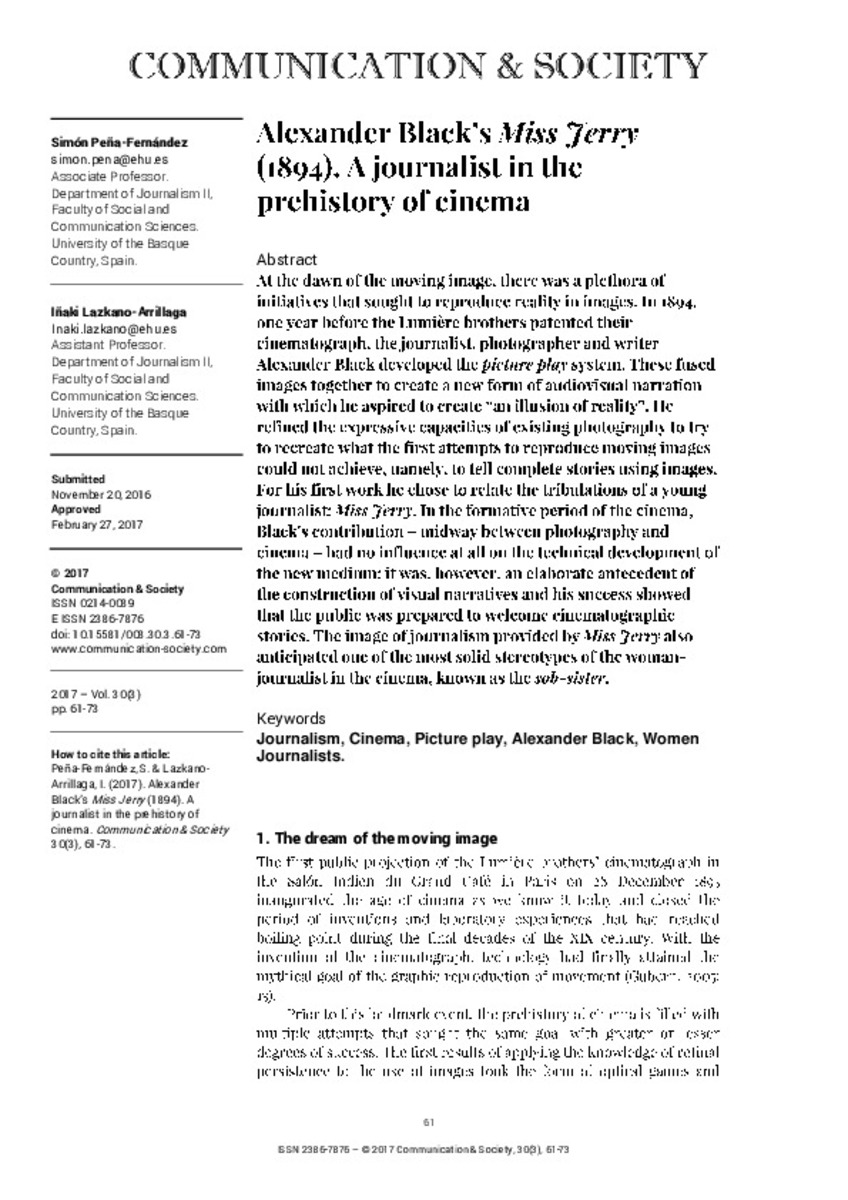Alexander Black’s Miss Jerry (1894). A journalist in the prehistory of cinema
Palabras clave :
Journalism
Cinema
Picture play
Alexander Black
Women Journalists
Fecha de publicación :
2017
Editorial :
Servicio de Publicaciones de la Universidad de Navarra
Cita:
Peña-Fernández, S. (Simón); Lazkano-Arrillaga, I. (Iñaki). "Alexander Black’s Miss Jerry (1894). A journalist in the prehistory of cinema". Communication & Society. 30 (3), 2017, 61 - 73
Aparece en las colecciones:
Estadísticas e impacto
0 citas en

0 citas en

Los ítems de Dadun están protegidos por copyright, con todos los derechos reservados, a menos que se indique lo contrario.







